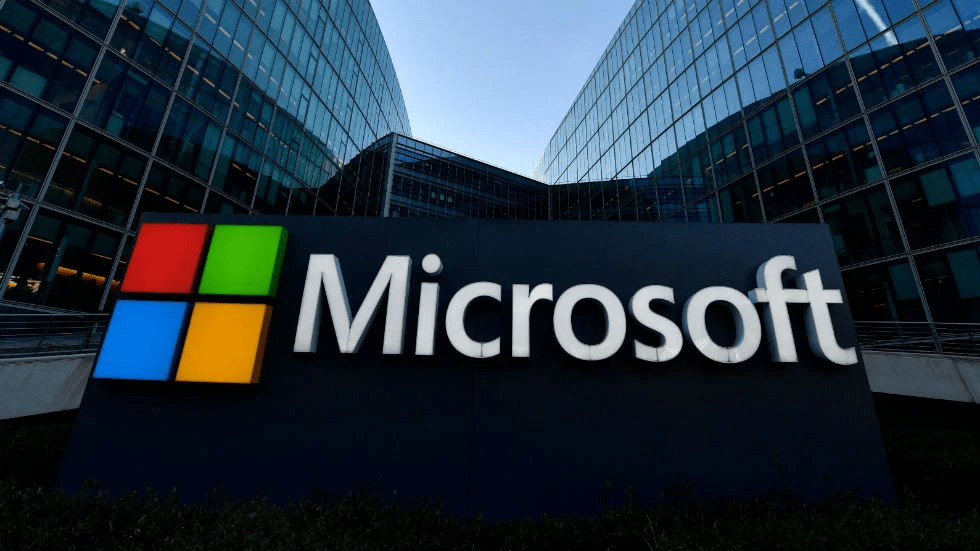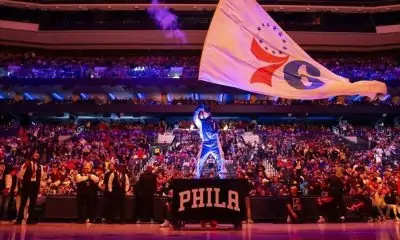Tech
Google Answers Advertisers’ Burning Questions About FLoC – Search Engine Journal

We now know Google will not build out alternative identifiers to track individuals as they browse the web.
While Google’s March 3 announcement may not have come as a huge surprise, it did raise a lot of questions with advertisers as to what features they would lose and what future targeting options might look like.
Ginny Marvin, Google’s Ads Product Liaison, was gracious enough to answer some of those burning questions for us.
It seems like there’s a lot of confusion around the Privacy Sandbox. Could you explain the privacy sandbox in layman’s terms?
Ginny Marvin (GM): The Privacy Sandbox was announced by Chrome in August 2019 (a ‘Sandbox’ is a testing environment). It is an effort to develop a set of standards in collaboration with the open web community to support a new approach to digital advertising that is privacy-centered. This approach doesn’t rely on third-party cookies.
As part of the Privacy Sandbox, there are currently a set of proposed APIs to support various monetization use cases such as interest-based advertising, ads measurement, reporting and other scenarios.
Advertisement
Continue Reading Below
The API you’ve likely heard about most is called FLoC (Federated Learning of Cohorts). It is designed to enable interest group advertising without needing individual user profiles.
Users can be added to interest groups (cohorts) based on their browsing history, but the big difference is that cohorts are built within the browser using on-device processing to keep a person’s web history private on the browser. Recent results from tests of FLoC to reach in-market and affinity Google Audiences, for example, have proven comparable to third-party cookie signals.
You can see the work that’s happening collaboratively with the industry on the various API proposals in forums like the W3C.
How will advertisers be impacted by Google’ recent announcement that it won’t be building alternate identifiers to replace third-party cookies in 2022?
GM: The impact is that Google Ads buying tools are not planning to build or use new identifiers including PII that track individuals as they browse across the web once support for 3rd party cookies is phased out.
Advertisement
Continue Reading Below
Instead our web offerings will be powered by the Privacy Sandbox. Where there is not a first-party relationship, Google Ads buying tools will use APIs from the Privacy Sandbox to enable relevant ads and measure effectiveness. There is still work and testing to be done, but the aim is to continue to deliver advertiser outcomes and publisher monetization while prioritizing user privacy.
For audience targeting options that will be impacted, can you share insights into how they are being impacted and what they might look like in the future?
GM: Marketers will be able to use their own technology to identify high value FLoC IDs (each FLoC cohort will have an ID associated with it), and we expect ad tech platforms (including Google Display & Video 360) will accept such ID lists as seed lists for targeting and audience expansion.
The product design for these functions is in early stages, and we’ll be working with industry partners and clients to gather feedback as designs progress in Q1 and Q2 this year.
Q: Will website remarketing still be available for advertisers in 2022?
GM: One of the more lively discussions in the W3C regarding the Privacy Sandbox is how to enable the remarketing use case without the use of third-party cookies.
Last year, Chrome first introduced the TURTLEDOVE proposal to allow an advertiser, publisher or ad tech company to leverage their own first-party data, such as consumers who visited their website, to inform ads a consumer might see.
Chrome’s new FLEDGE proposal (First “Locally-Executed Decision over Groups” Experiment) expands on TURTLEDOVE by including a way for on-device bidding algorithms to use additional information from a new trusted server designed for this sole purpose.
User data, including browsing history, remains shielded (within the device) from buyers and sellers. This first experiment is expected to ship during 2021.
Will advertisers ability to report on in-market audiences, affinity audiences or placements be impacted?
GM: Our intention is to still allow marketers to get the relevant reporting they need in order to make critical business decisions. More to come on this in the future.
Advertisement
Continue Reading Below
Can you explain how advertisers will be able to create interest groups and what some of those criteria might look like?
GM: The central idea for the current FLoC is that the browser creates cohorts of users to ensure they cannot be identified individually. It looks for clusters of similar recent browsing activity to group people into cohorts of similar interests.
Advertisers can also use their own machine learning algorithms and predictive analytics capabilities to make decisions on what audiences or interests or cohort IDs might represent.
FLoC is aimed at giving advertisers the same capabilities that they had with third-party cookies, but the big difference is the privacy focus on doing this based on cohorts rather than individuals.
Can you share any detail on how granular will cohorts be?
GM: FLoC cohorts are still being tested, but they are based on general web interests indicated by recent browsing behaviors.
We expect to begin testing FLoC-based cohorts with advertisers in Google Ads next quarter.
Advertisement
Continue Reading Below
How frequently will those cohorts be updated?
GM: Cohorts are dynamic and will update every seven days during the initial trial.
As a person’s browsing behavior changes, their browser will assign them to a different FLoC cohort that reflects those interests.
For example, at one point they might be in a FLoC cohort with thousands of other people who have also recently visited websites about gardening and travel overseas, and then at another point in time they could be in a group of people who have recently visited sites about art supplies and cooking.
Do you see Google offering a third-party audience exchange in the future? In some of the documentation it references publishers abilities to sell audiences to advertisers – would Google Ads broker this functionality?
GM: We plan to deepen our support for solutions that build on direct relationships between consumers and the brands and publishers they engage with.
How will this impact reporting in Google Analytics? (In particular, the audiences report as well as demographics such as in-market and affinity audiences.)
GM: Google Analytics will continue to allow customers to bring in their first-party data, which they can use on their own or join with Google data.
Advertisement
Continue Reading Below
The primary change is that Google Analytics will not enable customers to do view-through conversion (VTC) measurement on third-party network inventory
Is there anything else that advertisers should know?
GM: The aim is to develop a sustainable, long-term solution that protects user privacy by keeping data on-device and gives advertisers and publishers solutions to succeed in a privacy-first world. There are still details to address and testing to do as we work with the industry.
Cookies aren’t going away just yet, and we know there are questions we can’t answer yet because Privacy Sandbox is still in development. We will continue to share more as work progresses.
For Google Ads, the next step is to begin testing FLoC-based cohorts with advertisers next quarter.
Tech
Google Unveils AI-Powered Pixel 9 Lineup Ahead of Apple’s iPhone 16 Release
Google has launched its next generation of Pixel phones, setting the stage for a head-to-head competition with Apple as both tech giants aim to integrate more advanced artificial intelligence (AI) features into their flagship devices. The unveiling took place near Google’s Mountain View headquarters, marking an early debut for the Pixel 9 lineup, which is designed to showcase the latest advancements in AI technology.
The Pixel 9 series, although a minor player in global smartphone sales, is a crucial platform for Google to demonstrate the cutting-edge capabilities of its Android operating system. With AI at the core of its strategy, Google is positioning the Pixel 9 phones as vessels for the transformative potential of AI, a trend that is expected to revolutionize the way people interact with technology.
Rick Osterloh, Google’s senior vice president overseeing the Pixel phones, emphasized the company’s commitment to AI, stating, “We are obsessed with the idea that AI can make life easier and more productive for people.” This echoes the narrative Apple is likely to push when it unveils its iPhone 16, which is also expected to feature advanced AI capabilities.
The Pixel 9 lineup will be the first to fully integrate Google’s Gemini AI technology, designed to enhance user experience through more natural, conversational interactions. The Gemini assistant, which features 10 different human-like voices, can perform a wide array of tasks, particularly if users allow access to their emails and documents.
In an on-stage demonstration, the Gemini assistant showcased its ability to generate creative ideas and even analyze images, although it did experience some hiccups when asked to identify a concert poster for singer Sabrina Carpenter.
To support these AI-driven features, Google has equipped the Pixel 9 with a special chip that enables many AI processes to be handled directly on the device. This not only improves performance but also enhances user privacy and security by reducing the need to send data to remote servers.
Google’s aggressive push into AI with the Pixel 9 comes as Apple prepares to unveil its iPhone 16, which is expected to feature its own AI advancements. However, Google’s decision to offer a one-year free subscription to its advanced Gemini Assistant, valued at $240, may pressure Apple to reconsider any plans to charge for its AI services.
The standard Pixel 9 will be priced at $800, a $100 increase from last year, while the Pixel 9 Pro will range between $1,000 and $1,100, depending on the model. Google also announced the next iteration of its foldable Pixel phone, priced at $1,800.
In addition to the new Pixel phones, Google also revealed updates to its Pixel Watch and wireless earbuds, directly challenging Apple’s dominance in the wearable tech market. These products, like the Pixel 9, are designed to integrate seamlessly with Google’s AI-driven ecosystem.
Google’s event took place against the backdrop of a significant legal challenge, with a judge recently ruling that its search engine constitutes an illegal monopoly. This ruling could lead to further court proceedings that may force Google to make significant changes to its business practices, potentially impacting its Android software or other key components of its $2 trillion empire.
Despite these legal hurdles, Google is pressing forward with its vision of an AI-powered future, using its latest devices to showcase what it believes will be the next big leap in technology. As the battle for AI supremacy heats up, consumers can expect both Google and Apple to push the boundaries of what their devices can do, making the choice between them more compelling than ever.
News
Microsoft Outage Hits Payment Processors

When major payment processing systems have problems, the issues impact many critical systems that society depends on. In this article, we’ll explain the cause of the Microsoft outage and discuss the impact computer networking issues had on Canada. We’ll also examine whether or not Microsoft was at fault and what businesses can do to prevent further outages.
What Happened With the Microsoft Outage?
The outage with Microsoft’s Azure payment processor resulted from a buggy security update from an outside company, CrowdStrike. CrowdStrike offers information technology security services for many Microsoft Windows computers. The company’s software developers sent a new update out, but instead of patching up minor issues with the existing software, the code within conflicted with Windows and prevented computers from booting up. Users expecting to start their computers for a typical day were instead faced with the dreaded “Blue Screen of Death” error message.
So, how does this produce a problem and a payment processor issue? Many computers running payment processing, among many other kinds of software used for airlines, banks, retail, and other essential services, couldn’t start and were unable to let payments through. This is a catastrophic issue for companies that are heavily reliant upon the speed and ease of an electronic transaction.
In Canada, the outage impacted critical computer systems for air travel. Flights couldn’t be paid for and booked, which caused major problems for customers unable to make transactions while flights remained grounded. Travellers stuck waiting for flights to take off made their way over to the airports’ Starbucks and other vendors, only to discover unusually long lines due to payment issues. Even online gamblers looking to take their minds off the situation couldn’t take full advantage of one of the fastest payment options out there because of the outage.
Aside from payments, hospitals for major health systems had to use paper to complete important tasks like ordering lab work and getting meals to patients. Emergency dispatch lines were temporarily unable to function correctly while their computer systems were down.
How Was the Outage Fixed?
Thankfully, CrowdStrike fixed the problem on their end quickly, mostly via an additional reboot that allowed CrowdStrike to send over unflawed code. Unfortunately, for some business and private customers, rebooting wouldn’t be enough with command-line level adjustments needed for the operating system to run correctly.
The Good and Bad of Outages
First, we’re thankful that the outage was not caused by hackers accessing and stealing a mountain of personal data. A recent outage with an automotive software provider went on for much longer and ended much worse for software provider CDK, which likely paid an undisclosed sum north of $20 million to get data back and systems restored.
By some chance, Microsoft is reported to have experienced its own outage, and many information technology professionals blame Microsoft in part for their issues because of how their systems attempted to fix the problem by rebooting over and over again, though some of Microsoft’s PCs needed to warn users to make a change manually. Unfortunately, any computer that required manual intervention took longer to recover, as a knowledgeable person had to access each computer affected by the issue. In some cases, between dealing with several hours of backlogged tasks and slow recovery processes, some businesses took days, not hours, to get back online.
The outage brings up another major point in the cybersecurity and computer industry. CrowdStrike and Microsoft are both big companies in their respective fields. As a result, the effects of bad code spread much further than they could have if there were more competitors making security products or if there were more software companies making operating systems like Windows. While only 8 million computers were believed to be affected out of a much larger global network, those are essential computers for worldwide communication and payment processing. Perhaps companies should be putting their eggs in more than one basket?
The testing methods for the outage are unclear—did CrowdStrike test the routine software update enough to detect the potential for a major outage? Apparently not.
What Should Businesses Do Next?
Software like Microsoft Azure’s payment systems come from what information technology professionals call ‘the cloud.’ The software is remotely managed over the internet, meaning that the computer that runs the system is not physically present at the location. Unfortunately, this also means that an issue with the internet can take critical systems out of service.
Businesses ranging from major airlines and banks to mom-and-pop stores would be well served by backup systems at their locations. These don’t have to be as primitive as the old-fashioned credit-card carbon-copy slide, but there are options available with consistent service that don’t repeatedly rely on the same networks.
Conclusion
There were certainly challenging moments for Canadian businesses and emergency services during the CrowdStrike and Microsoft outage. As they scrambled to understand the problem and waited, albeit briefly, for issues to resolve, many companies learned the importance of having local and reliable backup for their computer systems.
Tech
New photos reveal more details about Google’s Pixel 9 Pro Fold

Google’s secret new line of Pixel 9 phones isn’t that big of a secret anymore. Taiwan’s National Communications Commission (NCC) released new photos of the phones including the Pixel 9 Pro Fold from almost every conceivable angle.
Android Authority found the photos in the NCC archives and uploaded galleries of each of the four phones including the Pixel 9, 9 Pro, 9 Pro XL and 9 Pro Fold. They reveal some interesting details about the new Pixel phones.
The charging rates will be a little faster than the last generation of Pixel phones: Taiwanese authorities measured 24.12W for the base model, 25.20W for the Pro and 32.67W for the 9 Pro XL. The Pixel 9 Pro Fold, however, was the slowest of all of them at 20.25W. These numbers don’t often match up perfectly with the advertised ratings, so expect Google to be promoting higher numbers at its event.
Speaking of chargers, it looks like Google needed a bigger charger to power its new phones. Photos included in the NCC leak show each phone will come with a wall charger that’s around 45W depending on which model you purchase. The charger’s plug moved from the middle to the top of the brick.
The latest photo dump also shows the 9 Pro Fold unfolded for the first time. Google has moved the selfie camera to the inside screen for a wider field of view. The 9 Pro Fold also has a slimmer top and bottom, a reduced fold crease on the display and a full 180 degree unfolding angle to make a screen that’s just over 250mm or just under 10 inches.
These photos are the latest in a very long list of leaks of Google Pixel 9 photos. The last Pixel 9 leak came down yesterday showing two prototype models of the base and XL models. Google might look into buying a new combination lock for the high school locker where they apparently keep all their unreleased gear.

-

 Business12 hours ago
Business12 hours agoQuestions Hiring Managers Ask Themselves When Assessing Candidates
-

 Sports20 hours ago
Sports20 hours agoOilers sign Leon Draisaitl to an 8-year extension worth $112 million
-

 News12 hours ago
News12 hours agoNew Jersey floats $400 million in tax breaks to lure Philadelphia 76ers
-
Health11 hours ago
Prosperity Message From Jake – VIP
-

 News20 hours ago
News20 hours agoEdmonton Oilers sign centre Leon Draisaitl to eight-year extension
-

 News13 hours ago
News13 hours agoFormer aide to 2 New York governors is charged with being an agent of the Chinese government
-

 News12 hours ago
News12 hours agoMusk’s Starlink backtracks and says it will comply with judge’s order to block X in Brazil
-

 News9 hours ago
News9 hours agoChukwu on target as Canadian women thump Fiji 9-0 at FIFA U-20 World Cup in Colombia



















